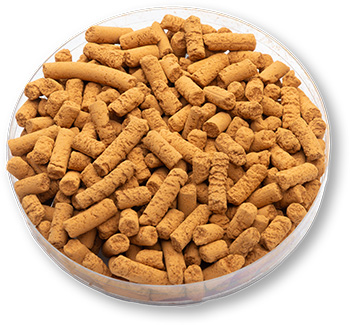Biogas
Reduce Costs and Increase Efficiency When Converting Waste to Energy
Biogas is a gaseous fuel produced by the fermentation of organic matter, most often in the form of bovine waste. The process produces H2S (carbon dioxide, methane) and other odorous contaminants that produce greenhouse gases.



PureAir Sulphasorb Fe™ Chemisorbant Media
Sulphasorb Fe™ media is an iron oxide-based scavenger, specialized for use in Biogas applications. Sulphasorb Fe™ media breaks new ground in the removal of H2S due to having a removal capacity that is 25% or more by weight. Unlike competing Iron Oxide or Iron Hydroxide scavengers, there is not an elemental sulfur build up on the outside – allowing the media to continue adsorbing thus extending its life. Sulphasorb Fe™ media has been successfully used in applications up to 100,000 ppm.
Sulphasorb Fe™ media provides double the desulfurization capacity as iron sponge technology, creating a more cost-effective solution. Ensuring over 99% removal of H2S, Sulphasorb Fe™ media’s price makes it an even more attractive solution for removing biogas.
PureAir Advantages
| Benefits | Features |
|---|---|
| Powerful |
|
| Low Maintenance |
|
| Specifications |
|
| Multiple Applications |
|
Sulphasorb Fe™ is easy to replace and doesn’t clump or harden like traditional iron sponge products.
FACILITY TYPE: Dairy Biogas Plant
LOCATION: Central California
MEDIA USED: Sulphasorb Fe™ chemisorbant media
PROBLEM: The plant needed an odor control solution to combat the unpleasant odors and greenhouse gases created during the biogas process.
SOLUTION: Our media alone provided twice the odor removal capacity and allowed the facility to reduce its equipment size by half. Originally, the facility was producing H2S levels of 7,000 ppm. After our media was installed, H2S levels dropped to below 1 ppm.


